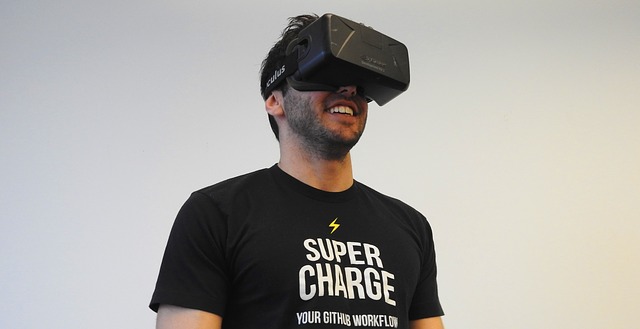 Many call virtual reality the new frontier of marketing. Some call it the next new big thing in marketing. Others say it’s not quite ready for prime time.
Many call virtual reality the new frontier of marketing. Some call it the next new big thing in marketing. Others say it’s not quite ready for prime time.
Virtual reality offers 360-degree, three-dimensional videos through either headsets or 360 degree online videos. Viewers feel as if they are fully immersed in the experience, be it playing a video game, watching a concert, climbing a mountain, or flying a plane.
Virtual reality has many marketers salivating over the potential for new, high-impact, and memorable marketing experiences for customers. Use of virtual reality in branded content was a popular topic among ad agency executives, technology salesmen and media company representatives at the recent Cannes Lions advertising festival, according the The Wall Street Journal.
Gannett’s USA Today Network showed its “VRtually There,” a forthcoming weekly VR news show. The publisher displayed VR content it has produced for brands, and demonstrated its new VR ad unit, dubbed “cubemercial,” that places viewers inside a virtual reality room. VR proponents are naturally enthusiastic about VR’s prospects, although VR has not yet become a widespread marketing reality. While no company has committed to a cubemercial trial, Gannett’s chief revenue officer, Kevin Gentzel, told the Journal it has received “a great reception.”
Not Yet Ready for Prime Time?
Others believe VR’s time has not yet come. “It’s going to take some time before the quality of content and volume of devices grow in volume,” said Google Vice President of Virtual Reality Clay Bavor at the Cannes Lions Festival, according to Campaign Asia-Pacific. “There will most likely be some headsets, but we think that the platform that will help VR reach critical mass will be mobile.”
Less than one percent of the world has seen VR, but Google hopes its VR headset made from cardboard brings the experience to the masses.
In addition to economic and technological hurdles, content creators for VR face challenges involving creative mindset, Jessica Brillhart, principal filmmaker at Google told Campaign Asia-Pacific. VR is not the same as ordinary filmmaking. “In traditional filmmaking, the frame is everything; you never look away from the frame,” she said. “But with VR, it becomes a world of frames and the concept of space changes. The viewer becomes the visitor, so how do you engage and tell a story in that way?”
Not as Easy as it Seems
VR proponents believe combining branded content and virtual reality will substantially increase engagement. “The formula, of course, isn’t that simple. And as with any medium of messaging, the message itself must be well crafted and executed,” writes Claude Harrington in Business2Community. The article aggregates branded VR segments from McDonald’s, Oreo, Mercedes-Benz, NASCAR, Red Bull, U.S. Soccer and other brands.
VR can provide the unique advantages of immersion, high-impact experiences and novelty, Harrington says. Marketers should keep tabs on the evolving technology and watch the VR and 360 degree videos produced by early adopters and innovators. Some examples:
Rovio worked with McDonalds to create a 360-degree experience that combines VR animation of characters from The Angry Birds movie with patrons in a McDonald’s restaurant.
Oreo created a 360 degree video that welcomes viewers inside the “Oreo Wonder Vault” to explain the origins of its cupcake-flavored cookies.
The 360 degree video from Mercedes lets users experience what it’s like to drive down the California coastline in a Mercedes-Benz SL 500.
The initial adoption of VR will likely come from deep-pocket brands willing to experiment in creating memorable experiences for consumers and hoping to gain understanding of how best to utilize the technology to create the greatest marketing impact. The tourism and real estate industries seem likely candidates to go all-in on VR. Once established by the early B2C adopters, VR will move to big-ticket B2B marketing from companies such as Boeing, Lockheed Martin, General Electric and Intel.
Bottom Line: Virtually reality offers brands enormous benefits and is the new marketing frontier, proponents say. Even if they don’t create 360 degree videos this year, perceptive marketers will keep a close eye on the progressing technology on how innovative brands are implementing it.
How can brands best employ VR for marketing and corporate communications? What potential VR piece would you like to see created? Please comment below.
William J. Comcowich founded and served as CEO of CyberAlert LLC, the predecessor of Glean.info. He is currently serving as Interim CEO and member of the Board of Directors. Glean.info provides customized media monitoring, media measurement and analytics solutions across all types of traditional and social media.





i think that the virtual reality is ready for prime time and can provide the unique advantages of immersion.
I think that the virtual reality is ready for prime time and can provide the unique advantages of immersion.
I think that the virtual reality is ready for prime time and can provide the unique advantages of immersion.
i love VR